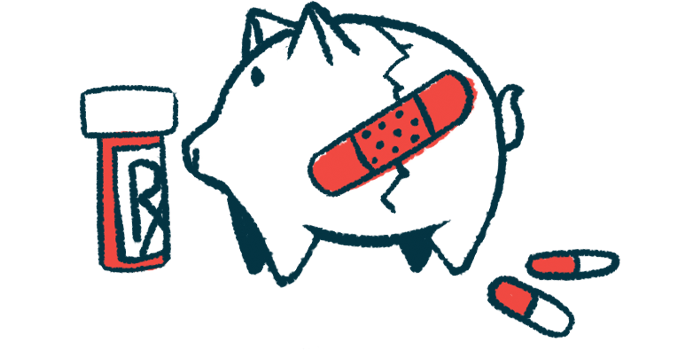Wound dressings, caregiving drive high costs in RDEB care: UK study
Assessing costs helps define healthcare, research priorities

Recessive dystrophic epidermolysis bullosa (RDEB) is linked with high care costs, particularly for severe forms of the disease, according to a U.K.-based study.
Costs associated with dressings and caregivers were significant contributors, despite many of them being unpaid. The findings “highlight the need for adequate reimbursement for EB care which can place significant financial strain on families,” the researchers wrote in “Costs of UK community care for individuals with recessive dystrophic epidermolysis bullosa: Findings of the Prospective Epidermolysis Bullosa Longitudinal Evaluation Study,” which was published in Skin Health and Disease.
Epidermolysis bullosa (EB) is marked by fragile skin that blisters easily in response to a minor injury or friction, such as rubbing or scratching. In RDEB, mutations in COL7A1 lead to a deficiency of type VII collagen, a protein that helps anchor skin layers together.
Assessing the costs associated with rare diseases, such as RDEB, is paramount for governments and pharmaceutical companies to define healthcare and research priorities. The few studies to assess costs linked with EB relied mostly on patient reports, incomplete health records, or insurance data.
Here, researchers in the U.K. and Australia review data from an ongoing natural history study, called Prospective Epidermolysis Bullosa Longitudinal Evaluation Study (PEBLES), to assess the community care costs of people with different forms of RDEB in the U.K. The total costs data were available for 59 patients, who shared a median of six costs evaluations throughout the study.
The most common subgroups were severe RDEB, with 25 patients, and intermediate RDEB with 21. Severe RDEB features widespread skin blistering from birth and frequent chronic wounds, while intermediate RDEB may involve joints that can’t be straightened, thickened skin, and limited fusion of the spacing between the fingers.
Less common types included inversa RDEB where damage is usually not as widespread and is often worse in the neck, groin, and underarms; and pruriginosa RDEB, which involves skin fragility and intense itching.
Wound dressing costs
The analysis of the first, or index, costs review showed that across the RDEB subtypes the median annual costs per person were £14,124 (about $17,750). Patients with severe RDEB and pruriginosa RDEB had the highest costs, £89,988 (about $113,140) and £44,880 (about $56,400), respectively. The same was seen when all the cost reviews were considered.
A statistical analysis showed a strong correlation between higher overall costs with worse disease severity, as assessed by the Birmingham EB Severity Score.
The index median annual cost per person related to regular dressing changes reached £26,657 (about $33,530). When considering all reviews, it reached £33,628 (about $42,300). The greatest wound dressing costs were reported in severe RDEB (£77,154 or about $97,090) and pruriginosa RDEB — £32,686, or about $41,130.
Participants with RDEB spent a median of 18 hours a week on dressing changes, followed by 10 hours among those with pruriginosa RDEB. In general, the costs were lower in young children due to their smaller wound size.
Caregiving costs
Only 13 patients reported hiring a caregiver, mostly with severe or pruriginosa RDEB, with total costs at index review of £9,750 (about $ 12,260) for a median of 15 hours a week. Annual costs reached £18,200 (about $ 22,900) when considering all cost reviews. Severe RDEB and inversa RDEB patients reported the highest costs.
In nearly half the cases, caregivers were unpaid for assisting wound dressing changes. If paid, median annual costs per patient for those reporting only unpaid carers at the first review would be about £11,565 ($14,550). Most participants with severe RDEB (68%) and pruriginosa RDEB (67%) had a home visit by a clinical nurse specialist in the year before their first review.
Of 43 patients who completed a quality of life questionnaire, 47% said RDEB had a great to severe financial impact. Slightly more than a quarter of the participants (29%) were unemployed. Also, the caregivers of 36% of patients were unable to work besides providing EB-related care.
The high costs associated with RDEB should boost the development of “new therapies which accelerate wound healing and diminish total wound burden, thereby reducing costs of dressings and care,” the scientists said.







